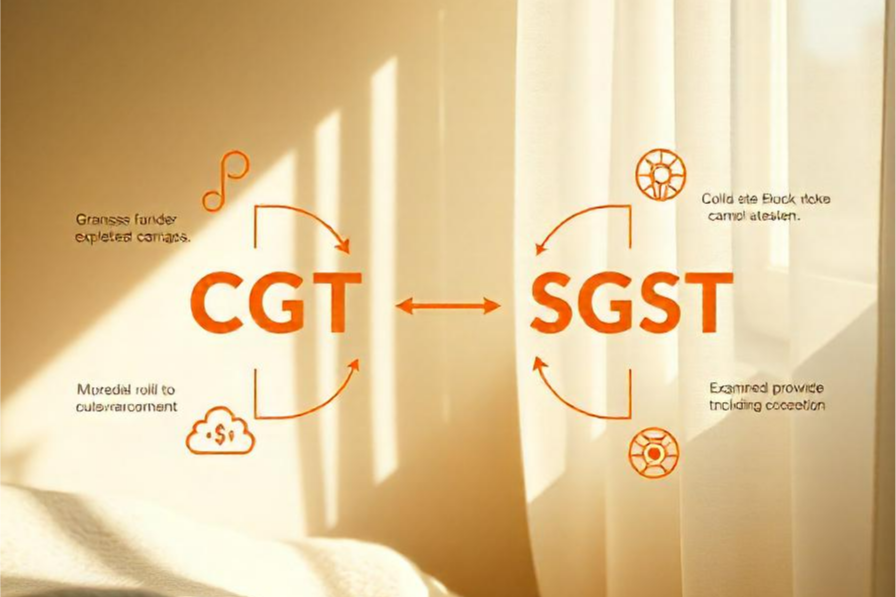Fixed Asset Accounting in the Books of a Private Limited Company: All You Need to Know

Fixed assets are one of the most important parts of a private limited company’s financial structure. It is very important that the accounts of fixed assets are presented accurately, both for the purposes of compliance and for financial reporting and decision-making. The present blog will enable readers to understand in detail the procedures, policies, and laws relating to the accounting of fixed assets in a private limited company. What are Fixed Assets? Fixed assets are long-term tangible assets that the company owns and utilizes in generating revenue in its operations. They are not held for resale in the normal course of business operations. Examples include: Land and buildings Machinery Vehicles Furniture Computers and software Accounting Standards and Framework Applicable Standards Indian Accounting Standards (Ind AS): For companies falling under specified thresholds. Accounting Standards (AS): For smaller companies not covered under Ind AS. International Financial Reporting Standards (IFRS): For multinational entities. These standards provide guidance on the recognition, measurement, depreciation, revaluation, and disposal of fixed assets. Key Aspects of Fixed Asset Accounting 1. Recognition Fixed assets are recognized in the books when: It is probable that future economic benefits will flow to the company. The cost can be reliably measured. Example: Machinery: When the asset is ready for use. Land: At cost when purchased. 2. Initial Measurement Fixed assets are initially measured at cost: Purchase price Costs that can be directly attributed to: Transportation, installation, legal fees. Dismantling and restoration costs: For assets that require restoration of site. Example: If a machine costs ₹ 10,00,000, and installation expenses are ₹ 50,000 and transportation expenses are ₹ 20,000, then the total initial cost would be ₹ 10,70,000. 3. Measurement after Recognition Fixed assets shall be subsequently measured by: Cost Model: Carried at cost less accumulated depreciation and impairment losses. Revaluation Model: Carried at a revalued amount less depreciation and impairment. Example: If land is revalued upwards by ₹5,00,000, the surplus is recorded in a revaluation reserve. 4. Depreciation Depreciation represents the decrease in the value of an asset during its useful life. Methods: Straight-Line Method (SLM): Uniform cost over the life of the asset. Written Down Value (WDV): Higher depreciation in the earlier years. Depreciation must be calculated considering useful life, which is given in Schedule II of the Companies Act, 2013; salvage value; and applicable rates for different assets. Example: A vehicle costing ₹5,00,000 with a useful life of 5 years and residual value of ₹50,000 will have annual depreciation under SLM = ₹(5,00,000 – 50,000) / 5 = ₹90,000. 5. Impairment Companies should test their assets periodically for impairment to ensure that the carrying value does not exceed the recoverable amounts. An impairment loss is an immediately recognizable loss that appears in the profit and loss account. 6. Revaluation An entity may revalue their fixed asset to reflect their fair value. Revaluation adjustment shall be credited as a rule, unless it is in reversing an earlier loss. 7. Capitalization of Expenses Some costs that arise after acquisition, like significant improvements or additions, are capitalized, but maintenance costs are not capitalized and are expensed. Example: A new feature added to a machine enhances productivity; this is capitalized. The routine oiling of the same machine is expensed. 8. Disposal of Fixed Assets Upon disposal, the company needs to: Write off the cost of the asset and the accumulated depreciation from the books. Record the profit and loss account for any gain or loss. Example:If an asset whose book value is ₹2,00,000 has been sold for ₹2,50,000, then a gain of ₹50,000 is booked. Fixed Assets Acquisition Accounting Entries: Acquisition: Fixed Asset Account Dr Input GST Account Dr To Vendor Account Depreciation: Depreciation Expense Account Dr To Accumulated Depreciation Account Revaluation: Fixed Asset Account Dr To Revaluation Reserve Account Disposal: Bank Account Dr Accumulated Depreciation Account Dr To Fixed Asset Account To Profit/Loss on Sale of Asset Account Fixed Asset Register A fixed asset register should be maintained to ensure proper accounting and recording. Key details include: Asset description Purchase date and cost Depreciation method and rates Revaluation details Disposal date and proceeds Regulatory and Tax Implication Companies Act, 2013 The Companies Act adheres to Schedule II for impairment. Asset revaluation by companies is mandatory in certain cases. Income Tax Act 1961 Separate depreciation rates prescribed under the tax laws Block of assets under the concept for tax purposes. GST Input tax credit on the capital goods. Reverse charge mechanism in certain cases. Fixed Asset Accounting Best Practices: Establishment of a clear capitalization policy. Physical verification to be carried out periodically. The fixed asset register should be updated on a regular basis. Annual impairment tests to be carried out. Strong and reliable accounting software should be used to ensure accuracy. Conclusion Fixed assets need to be accounted for correctly to maintain transparency and good books of accounts for any private limited company. With relevant accounts standards, proper maintenance of records, and updated knowledge regarding tax laws, your company will be well advised on how to manage fixed assets better for better operational efficiency and sound financial health. For professional experience in fixed asset accounting or customized advanced accounting tools, hire an expert or deploy powerful accounting software tailored to address the needs of your company.
Can a Company Take GST Input on Car Purchase?

Being a professional Chartered Accountant with a rich experience of more than 4 years in GST and other taxation practices, one of the most general queries that businesses have come up with is: Can a company claim GST input on the purchase of a car? The answer depends on many factors: the purpose of the purchase, the kind of car, and how the vehicle is used in the business. In this blog, I will break down the rules, exceptions, and practical aspects surrounding the claim of GST input credit on car purchases under the Indian GST regime. Understanding Input Tax Credit under GST: ITC is an enablement for any business to reduce the burden of tax payable on its output by way of credit for the amount of GST already paid on its inputs. The mechanism thus ensures that only the value addition at every stage in a supply chain is subjected to tax. General Conditions for ITC The following are the conditions that must be satisfied for claiming ITC: Goods or Services Must Be Used for Business: ITC shall be available only for goods or services used for the purpose of business. Possession of Tax Invoice: ITC can be claimed only when there is a valid tax invoice or debit note. The goods or services should not be blocked: According to Section 17(5) of the GST Act, certain goods and services are blocked. The GST is to be paid to the government: The supplier has to pay the GST to the government. Now, let’s see how these apply to motor vehicles. GST Rules on ITC for Motor Vehicle – Blocked Credit under Section 17(5) In this regard, the ITC on motor vehicles used for transporting persons, having a seating capacity of less than or equal to 13 persons (including the driver), has been specifically blocked in the GST law. It thus implies that ITC on cars, SUVs, and similar types of vehicles is generally not available. However, exceptions do exist. When can a Company Claim ITC on Car Purchases? Used for Specific Businesses ITC is available if the motor vehicle is used in the following business activities: Transportation of Goods: Vehicles like trucks, tempos, or any other goods carriers are covered to claim ITC. Passenger Transport Services: If the business is engaged in the supply of passenger transport services, such as taxis or buses, it can claim ITC. Training Services: Vehicles used for imparting driving training or for similar purposes are permitted. Vehicles Having Seating Capacity of More Than 13 Persons ITC can be claimed on motor vehicles having a seating capacity of more than 13 persons, for instance, buses and big vans. Leasing, Renting, or Selling of Vehicles If the business involves letting out vehicles on lease, renting or sale of vehicles, ITC can be claimed on the purchase of such vehicles. Special Utility Vehicles Vehicles used for emergency services, such as ambulances, fire engines, or other specialized purposes, can avail ITC. Common Scenarios Company Buys a Car for Directors or Employees No ITC: If the car is used for personal or employee-related purposes, ITC cannot be claimed. Possible Exception: If the motor car is utilized only for the purpose of journey related to business and it also meets other criteria, such as its utilization in a taxi service, then ITC may be considered. Purchase of a Commercial Vehicle (e.g., Truck) ITC Allowed: Since it is used for the transportation of goods, ITC can be claimed. Company Buys a Bus for Employees’ Transport ITC Allowed: If the seating capacity exceeds 13 persons and the same is used for employee transport exclusively. Leasing or Rental Business ITC Allowed: Companies engaged in renting, leasing, or fleet management business, ITC will be available in full, on the cars purchased out of business use. Practical Tips for ITC Documentation: Clearly establish the business purpose of the vehicle through the invoice, contract, and other records. Business and Personal Use to be Kept Separate: Maintain the log and keep all records necessary to distinguish between business use and personal use. Compliance: Timely filing of returns along with fulfilling all the conditions related to ITC shall help to avoid litigation with the department. Conclusion While claiming GST input on car purchases is generally restricted, businesses can benefit from ITC in specific cases. Understanding the nuances of GST laws and maintaining proper documentation is essential to make the most of available tax benefits. As an experienced Chartered Accountant, I recommend consulting with a GST expert to evaluate your company’s specific situation. Proper planning and compliance may save a lot and also avoid potential penalties. Please ask for any personalized advice or help on your specific GST compliance needs! Have Questions? Drop your queries in the comments below, and I’ll be happy to help clarify!
Choosing Between Normal GST Registration and Composition Scheme: A Guide for Business Persons

As an experienced Chartered Accountant with 4 years in the field, I’ve often seen businesses grapple with the choice between Normal GST Registration and the Composition Scheme. Each option comes with its own benefits and limitations, and the decision depends on various parameters that align with your business goals, operations, and structure. Here’s an easy-to-understand guide to help you make the best choice. Understanding the Basics 1. Normal GST Registration: Suitable for businesses of any size. Allows the collection of GST from customers and availing Input Tax Credit (ITC). Requires detailed tax filings and compliance. Applicable to businesses with turnover above the prescribed limit (₹20 lakh or ₹40 lakh depending on the state and type of business). 2. Composition Scheme: Designed for small businesses with turnover up to ₹1.5 crore (₹75 lakh for certain states). Involves paying a fixed percentage of turnover as tax. No Input Tax Credit allowed. Limited compliance and filing requirements. Cannot supply interstate goods or services and has restrictions on business types (e.g., service providers other than restaurants have limited eligibility). Parameters to Consider 1. Annual Turnover: If your turnover exceeds ₹1.5 crore, you’re not eligible for the Composition Scheme. For businesses below the turnover limit, Composition can be an attractive option, provided other conditions align. 2. Nature of Business: Composition Scheme is ideal for businesses with limited customers who do not require GST invoices (e.g., small retailers, manufacturers). If your business deals with large corporate clients or export customers who demand GST invoices and ITC, Normal GST Registration is the better choice. 3. Input Tax Credit (ITC): Businesses with significant purchases and input GST (e.g., manufacturers, wholesale traders) benefit from ITC under Normal Registration. If input costs and ITC claims are negligible, the Composition Scheme could reduce tax liabilities. 4. Compliance and Filing Burden: The Composition Scheme requires quarterly filing and simplified compliance, making it a stress-free option for small businesses. Normal GST Registration, while offering ITC benefits, involves monthly filings (GSTR-1, GSTR-3B) and strict record-keeping. 5. Customer Base and Pricing Strategy: Under the Composition Scheme, you cannot collect GST from customers directly. This can be advantageous for price-sensitive markets. If your customers are comfortable with GST-inclusive pricing, Normal Registration is more suitable. 6. Business Expansion Plans: If you plan to expand across states or enter exports, Normal Registration is mandatory as the Composition Scheme restricts interstate supplies. For localized, small-scale operations, the Composition Scheme is sufficient. 7. Sector and Legal Restrictions: The Composition Scheme excludes service providers except for restaurants. Businesses in specialized service sectors must opt for Normal Registration. Evaluate your eligibility carefully based on government regulations. Comparative Table: Normal GST Registration vs. Composition Scheme Parameter Normal GST Registration Composition Scheme Turnover Limit No limit Up to ₹1.5 crore ITC Benefits Available Not available Compliance Monthly filings Quarterly filings Tax Rate Based on product/service category Fixed percentage on turnover Invoicing GST-compliant invoices Non-GST invoices Customer Type GST-compliant clients End consumers/price-sensitive clients Interstate Supply Permitted Not permitted Business Complexity Medium to high Low Recommendations 1. Choose Normal GST Registration if: Your business has high turnover and frequent interstate transactions. Input costs and ITC are significant contributors to your profitability. Your customers expect GST invoices for claiming their own ITC. 2. Opt for the Composition Scheme if: Your operations are small, local, and focused on end consumers. You want simplified compliance with minimal filing. Your customers are price-sensitive and GST compliance isn’t a dealbreaker. Final Thoughts The decision between Normal GST Registration and the Composition Scheme is not one-size-fits-all. It depends on your turnover, nature of business, customer expectations, and operational preferences. Evaluate these parameters carefully and consult a professional if needed to make an informed decision that aligns with your business goals.
HSN Codes within GST, India: Implications for Business Persons

The introduction of the HSN code in the GST regime has brought in a sea change in the way that business entities are accustomed to dealing with taxation and compliance in this country.HSN stands for Harmonized System of Nomenclature, a globally accepted classification system for goods. Under GST, businesses are required to use HSN codes for the purpose of systematic documentation and smooth tax administration. But what does it really mean to business persons, and how does it affect their daily operations? Let’s delve into the details. Simplifying Tax Compliance: One of the most significant impacts brought about by the implementation of HSN code is simplifying and streamlining tax compliance. The HSN code classifies goods in a uniform manner, hence eliminating ambiguity and reducing errors in tax filings. Business owners are now required to apply correct HSN codes on their products, which in turn helps the government in curbing tax evasion and ensuring uniformity across sectors. Increased Global Competitiveness in Trade: HSN codes enable the tax structure of India to fall in line with the international norm, thus facilitating cross-border trade for exporters and importers. Business persons involved in international trade will benefit from reduced compliance challenges and better acceptance of Indian goods in global markets. Challenges in Initial Implementation: The HSN system brings a lot of long-term benefits, while for the first period, the new system gave many challenges for businesspeople, especially the owners of small and medium enterprises. Understanding and correctly applying the proper HSN code demanded extensive training and adjustments in internal processes, which contributed to higher operation costs. Better Inventory Management: The standardization of the HSN code helps the business do better inventory and supply chain management. Correct categorization reduces cases of mismanagement and will help in planning procurement and distribution more effectively. Impact on Invoicing and Record Keeping: Business persons have to include the HSN code on the invoices, for which they need to upgrade their billing software and systems. This will ensure better record-keeping and smoother GST audits and reconciliations but increases the compliance burden for small businesses. Fines for Non-Compliance: Non-compliance with HSN code requirements may attract penalties, thus adding another area of responsibility for an entrepreneur in ensuring that the organization is moving according to such set norms. Non-compliance will also disrupt the operations either due to disputes or audits. Empowerment through Digitalization: As HSN codes became a necessity, businesses were compelled to be more digitalized, whereby the system can make all classification and compliance easier. The shift to digital, though painful at first, has opened new avenues for better assurances of efficiency and transparency in businesses. Thus, the introduction of HSN under GST has both short-term and long-term implications on business persons in India. Though it does introduce some challenges, especially in the initial phases, its benefits as far as compliance, global trade alignment, and operational efficiency are concerned cannot be denied. The need of the hour is adaptation and investment in training and technologies to help businesses thrive in this new taxation ecosystem.


